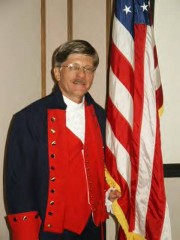As I reflect upon the “Roll Tide” fever that is rising throughout Alabama, even in some television commercials following their third National Championship, I am reminded of my own coaching successes, and some of the foundational ideals of leadership and organizational sustainability. Several words are being thrown around in the sports media that speak to the long-term growth of Alabama Football — “Dynasty” and “Legend”, each which brings to mind leadership legacy.
Alabama coach Nick Saban, post-game and season interviews, outlined several of the factors that have contributed to the Alabama Dynasty, not just during his era at Alabama, but over the years going back to Paul “Bear” Bryant in the 1950s. As I listened to him after the game, in his “Gatorade” soaked shirt, and during his next-day news conference, I thought about the leadership required to build a dynamic, sustainable program in any arena.
Successful organizations have a Program
Foundation – Character, Standards, Expectations
There is a foundational ideal around which any successful program is built that becomes the character, the heart, of the organization. It is based on the moral authority of the primary leader, the CEO, Head Coach, President, etc., which becomes the standard of ethics for the organization.
The leader models the acceptable behaviors for everyone, inside and outside the organization, thereby dictating the value system that must be accepted and incorporated into the personal value system of employees. People and other organizations observe these traits in the daily operation of, not only the organization as a whole, but also, in the performance and behaviors of the team members. Furthermore, leadership holds everyone accountable to these standards, taking necessary corrective action when necessary that upholds the standard.
Coach Saban exhibited his leadership by sending two players home a day after the team’s arrival in Miami because they failed to adhere to acceptable organizational standard of conduct. By doing so, he re-enforced the team expectations, enhanced his respect level, which inspires trust and confidence in his leadership. Coach Saban referred to his action as it related to the “program” of the organization.
Organizational Vision
Leadership establishes a vision of the organization; not the primary leader’s vision, but the vision of the organization. The primary leadership — Coach, Trustees, shareholder expectations, etc. — collaboratively says, “This is how we want to be perceived outside the company”. The collaboration continues down through the organization to establish buy-in and build the vision into the core of everyone in the organization.
Southwest Airlines vision of low air fares, flight safety, better Customer Service than anyone else with on-time flights has not changed since their inception in the 1970s. As Colleen Barrett, CEO Emirates of Southwest Airlines, says we are a Customer Service company, we just happen to fly air planes. The vision of Alabama Football, which reflects the University’s vision, states, “A Tradition of Champions – A Future of Leaders.” Everything they do, on and off the field, directly relates to their vision.
A strong, value-laden vision is crucial to success and sustainability.
Learning Organization
There are five qualities of a successful learning organization: Standards; Instruction; Practice; Feedback; and Release. Obviously, these apply to Universities and competitive teams of all types. It can also be applied to all organizations as well — Corporations, Companies, Religious, Community Service, Youth, etc.
Leadership for long-term sustainability and success needs also to follow this line of reasoning.
Standards – unarguably a foundational attribute for structure, teamwork, commitment, and performance.
Instruction – life-long learning is a requirement for personal and organizational growth to prevent stagnation and decline. Change management is necessary to maintain viability in economic terms. Likewise, leadership training is essential for leader growth.
Practice – expertise requires practice. All teams require practice. whether it be for equipment operation, competition, emergencies or new procedures.
Feedback – helps improve performance and growth. Employee feedback improves procedures for competing tasks. Feedback is essential to prevent mistakes that are costly to the organization. Employee mentoring is a form of feedback and affect several aspects of organizational performance.
Release – empowering employees to make decisions relevant to their position in the workplace improves confidence, teamwork and individual leadership. Alabama Football vision reflects this aspect of the learning organization.
Foresight
Greenleaf called foresight “The Central Ethic of Leadership” and that it is “the lead the leader has.” For Alabama football this is evident in their recruiting program. Leaders must also exhibit systematic foresight to stay ahead technologically, in the market place, fulfilling customer and employee needs, and implementing the almost daily change requirements to remain at the forefront in their business world.
Dynasties are built by leaders who maintain the foundational character of the organization; who keep the vision alive to both the organization and to those who are on the outside looking in; who create a learning environment that is passed on from generation to generation; and who visualize with a systematic foresight of the future. Changing when necessary, updating the system and employee with the required training and instruction, and maintaining a open line of communication up and down the organizational structure.
Dynasties have immense PRIDE – a Personal Responsibility In Developing Excellence. Likewise, Leaders demonstrate PRIDE – a Personal Responsibility In Developing Everyone. Furthermore, leadership builds PRIDE – a Personal Responsibility In Developing Ethics.
The future leaders they develop will live the ethical value system embedded in them from their association with the organization; who in-turn develop leaders, as so on.
I appreciate your feedback and comments.












